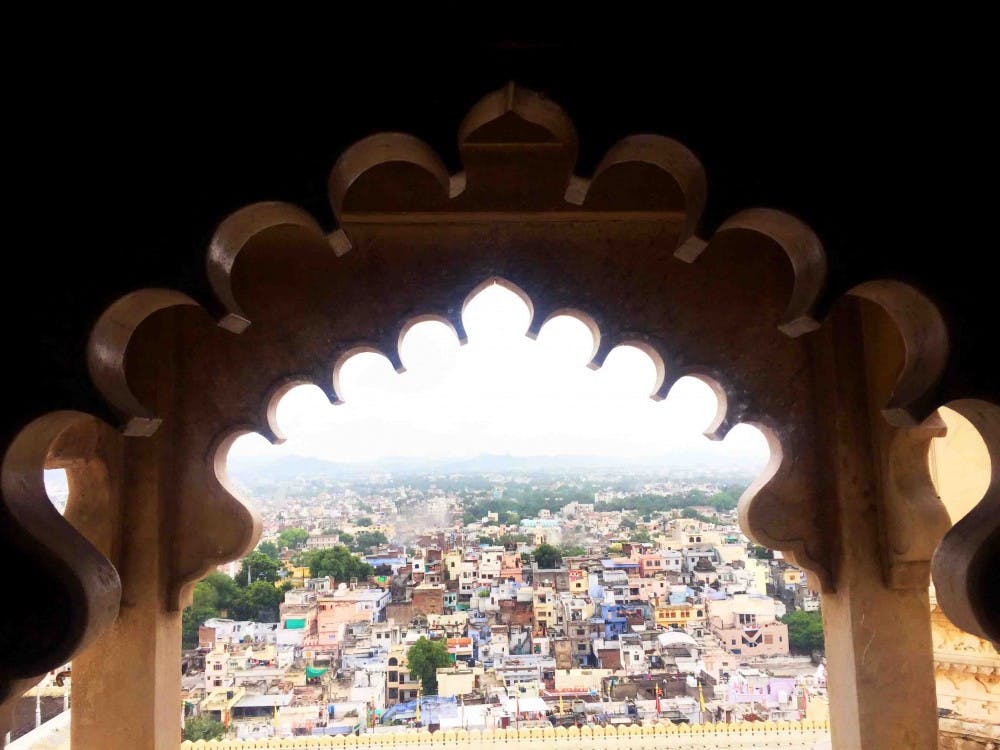As India struggles with a devastating coronavirus outbreak, Duke students who live in India are finding it difficult to return to their hometowns.
While more of the American population is getting vaccinated and COVID-19 safety guidelines are relaxing in the United States, India is experiencing a massive second wave of the virus, with hundreds of thousands of new cases daily.
“It’s harrowing to be living in India at this point,” said sophomore Shourya Agarwal. Agarwal is living in Agra, Uttar Pradesh.
“Most of the people I know have had COVID-19, and most families I know have lost someone dear to them to COVID-19,” he continued.
On top of the rising cases, there are shortages of hospital beds, coronavirus test kits and antiviral drugs, and India’s oxygen supply is perilously low.
“There is very little supply of medical oxygen left in the market, so we literally have to use industrial oxygen to help the patients right now,” Agarwal said.
“It’s really scary,” said sophomore Parinay Gupta. Gupta lives in New Delhi, one of the hardest-hit cities. “It’s like you’re living with a timebomb. You never know what’s up for tomorrow. And it’s even worse for people who are unable to afford good healthcare.”
The outbreak has been especially grim for those living with many extended family members, as is common in India.
“Because a lot of people in India live in large families, you have the potential to be a carrier which can lead to a major blow in your family,” Agarwal said. “The stakes are much higher and you’re more worried about other people than yourself.”
Agarwal observed that the general attitude towards COVID-19 has shifted.
“People are actually scared of COVID-19 now; they’re taking it much more seriously than they were last year,” Agarwal said. “But, the government’s attitude to COVID has changed. Last year you were getting flagrant warnings, instructions coming from the [India Council of Medical Research] for protocols to follow, but this time they’re burying their heads in the sand. And they’re trying to act as if it’s not as big a health emergency as it is.”
Rather than a nationwide lockdown, millions of Indians are currently living under locally imposed coronavirus restrictions, including curfews, partial closures and lockdowns.
“We have a curfew,” said sophomore Trisha Gupta. She is living in Pune, Maharashtra. “Grocery stores and medical stores on weekdays can only be open from 7 to 11 a.m. That’s the only time where movement is technically allowed—on the weekends, you’re not supposed to leave your house.”
However, Trisha Gupta has observed that many restrictions have not been strictly enforced.
“You do see people roaming around on the street during the weekends and also after 11 a.m. on weekdays,” she said. “I know that on weekdays if you are roaming around after [a certain time], usually a cop will stop you. But, it’s also easy to make up an excuse which is kind of bad.”
With India’s large population, questions have been raised about who gets priority when it comes to vaccination and treatment. Agarwal said that some of his family members are having difficulty getting their vaccines at appropriate time intervals.
“They don’t have the vaccine anymore,” Agarwal said. “A lot of the vaccine doses were supplied out so they’re actually spacing out the vaccines. All of my family has gotten the first dose. And now they’re recommending we should wait for 16 weeks before getting the second one because they’ve run out of vaccines and they have to prioritize.”
For the vaccines that are available, slots fill up quickly.
“Because of the third wave, people are a lot more paranoid,” Trisha Gupta said. “More of the educated class does want to get vaccinated, so it’s really difficult to find a vaccination slot.”
In addition to these slowed vaccination efforts, fully vaccinated doctors have come down with COVID-19, leading to growing fears of a more contagious variant.
“Probably the only way for COVID-19 to die out is mass vaccination—also something not happening at least in the foreseeable future,” Agarwal said. “People here are just kind of accepting COVID-19 as the harsh reality for now.”
Going from a campus with regular testing and a consistently low positivity rate to a country with rising case and death numbers came as a major shock to Duke students returning home.
“The biggest thing was on campus and even just in the U.S. in general, life feels like it’s coming back to normal,” Trisha Gupta reflected. “Over here, everything is closed—restaurants, malls, movie theaters, everything is closed. I think that contrast between complete freedom to lockdown, almost, has been kind of hard for me to adjust to.”
“At Duke, COVID-19 was just an inconvenience,” Agarwal added. “Over here, it’s more present. It’s literally existing next to you, and you can palpably feel it.”
The thoughts of returning to campus in August is a distant concern for these students.
“If we survive three months, if all the people in my family are just fine—that’ll be more than what I can be grateful for right now. My dad lost his uncle recently, there are so many people in my family or extended family who we have lost to COVID. Hoping that by August things look brighter,” Agarwal said.
Correction: A previous version of this article used the incorrect pronouns for Agarwal. The Chronicle regrets the error.
Get The Chronicle straight to your inbox
Signup for our weekly newsletter. Cancel at any time.
Navya Belavadi is a Trinity sophomore and an associate news editor of The Chronicle's 117th volume.

